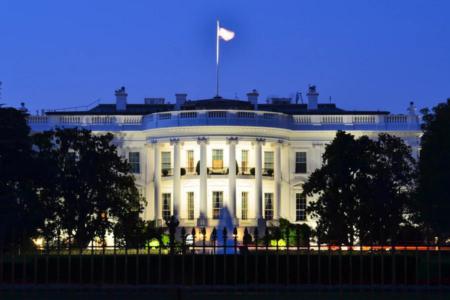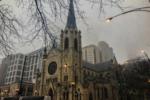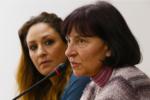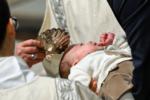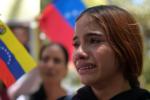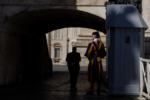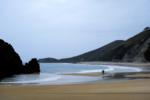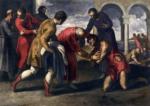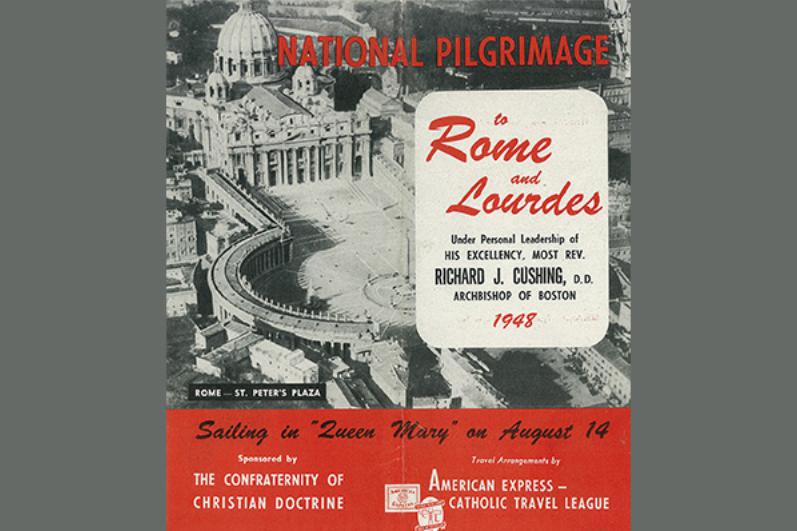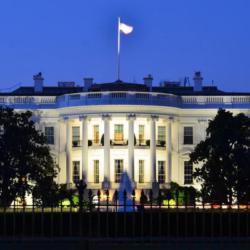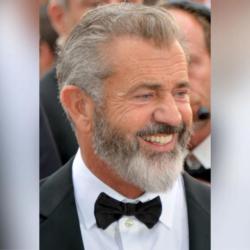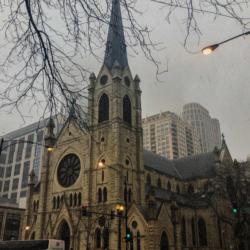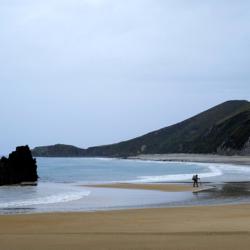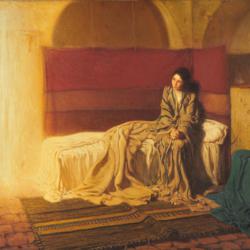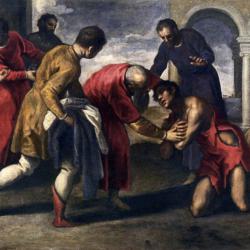Archbishop Cushing's 1948 pilgrimage to Lourdes and Rome -- Part I
This is the first of two articles that the Archive Department will publish for the Pilot to commemorate the 75th anniversary of the Boston Pilgrimage to Lourdes and Rome that took place between Aug. 13 and Sept. 13, 1948.
In January 1948, the Archdiocese of Boston announced that Archbishop (later Cardinal) Richard J. Cushing would lead a pilgrimage to Lourdes and Rome that coming August, under the sponsorship of the National Confraternity of Christian Doctrine. Public interest was immediate and enthusiastic; within a month, more than 4,000 people from 35 states and several Canadian provinces applied to the American Express-Catholic Travel League, the organizer of the trip, for information about the pilgrimage, which would last four weeks, cost between $995 and $2085, and include visits to France, Switzerland, and Italy and a private audience with Pope Pius XII.
The purpose of the American pilgrimage was to petition Pope Pius XII for the canonization of Pope Pius X. For many, it would be a first trip abroad. For Archbishop Cushing, who had recently quipped to an audience that the closest he had ever been to Rome was South Boston's Castle Island, it would be a first trip to the Holy See.
A group of 400 pilgrims departed by special train from Boston's South Station to New York City on Aug. 13, 1948. Nearly 10,000 well-wishers amassed on and around the platform to see them off with thunderous applause and cheers. Reflecting on the display, Archbishop Cushing told reporters, "It would be difficult for any thrill of the pilgrimage to surpass that of the send-off we got from South Station ... I was never so proud to be a Bostonian."
Joining the archbishop on the pilgrimage from the American hierarchy were Bishops Matthew F. Brady of Manchester, New Hampshire; Edwin V. O'Hara, of Kansas City, Missouri; and Edward F. Ryan of Burlington, Vermont. The pilgrims, numbering 536 in total, sailed from Pier 90 in New York on Cunard White Star Liner Queen Mary on Aug. 14. They were joined by members of the press, including William Callahan of The Boston Globe, Warren Carberg of The Boston Post, John Brooks of the Record-American, and William Schofield of the Herald-Traveler, all of whom would cover every stop for their respective outlets. (The Globe would even publish a special trans-Atlantic edition just for the pilgrims, distributed daily by volunteers, including by Boston's Auxiliary Bishop John J. Wright.)
Aboard the Queen Mary, pilgrims attended daily Mass and listened to lectures about the holy sites they were to visit at Lourdes and Rome. On Aug. 15, Archbishop Cushing followed the Assumption Sunday tradition of blessing the waters, the timing of the ceremony coinciding with the time that the waters were blessed in the Archdiocese of Boston, in Salisbury. Because of the popular belief that those who bathe in the sea on the day of the blessing of the waters receive special blessings and cures, some members of the pilgrimage group swam in the ship's swimming tank. On Aug. 17, as the ship neared France, the party learned of the death of baseball legend Babe Ruth. Prayers for the repose of his soul were said throughout the ship.
When at last, the Queen Mary arrived at Cherbourg on Aug. 19, the pilgrims encountered the sobering scenes of a country only three years removed from Nazi occupation and the fighting of the Second World War. Indeed, the passengers had to disembark from their ship via a lighter barge because all of the docks at Cherbourg that would have been large enough to accommodate the Queen Mary had been destroyed during the war. Soon after the two special trains conveying the pilgrims to Paris were underway, they stopped at Normandy, where the archbishop disembarked to bless thousands of wooden caskets of American war dead awaiting their removal home for burial.
On Aug. 20, after spending the morning sightseeing, the pilgrims held a Holy Hour at the Basilica of Sacre Coeur de Montmartre. Bishop Matthew F. Brady preached the sermon, emphasizing the ties between the American and French Churches. "The assistance which American Catholics are now extending to their brothers in faith in France are in return for many deeds on behalf of the young Church in America, which France so generously donated in the beginning," he said.
The following day, France bestowed two future American cardinals, Archbishop Cushing and Bishop John J. Wright, with the Legion of Honor. To those assembled for the ceremony, French Foreign Minister Robert Schuman declared, "France, which gave Boston its first bishop, Jean Louis Lefebvre de Cheverus, is proud to honor the present head of the Archdiocese of Boston."
The archbishop echoed the sentiments expressed at Sacre Coeur, stating that "the people of my nation and those of yours have the same dreams and desires. They wish to know one another and to help one another to work with one another."
The pilgrims' time in Paris culminated with a Solemn Pontifical High Mass at the Cathedral of Notre Dame. In his homily, Archbishop Cushing expressed the sentiments of all gathered: "Before this altar of Notre Dame, in the very heart of France, all my companions in sacred pilgrimage join in prayer that God may bless France; that Notre Dame of Paris will inspire . . . All the priests and people of this beloved land to realize in our day the Christian vocation of France; to bear witness before all nations to the primacy of the spiritual, to serve the Church as her eldest daughter."
VIOLET HURST IS AN ARCHIVIST FOR THE ARCHDIOCESE OF BOSTON.
